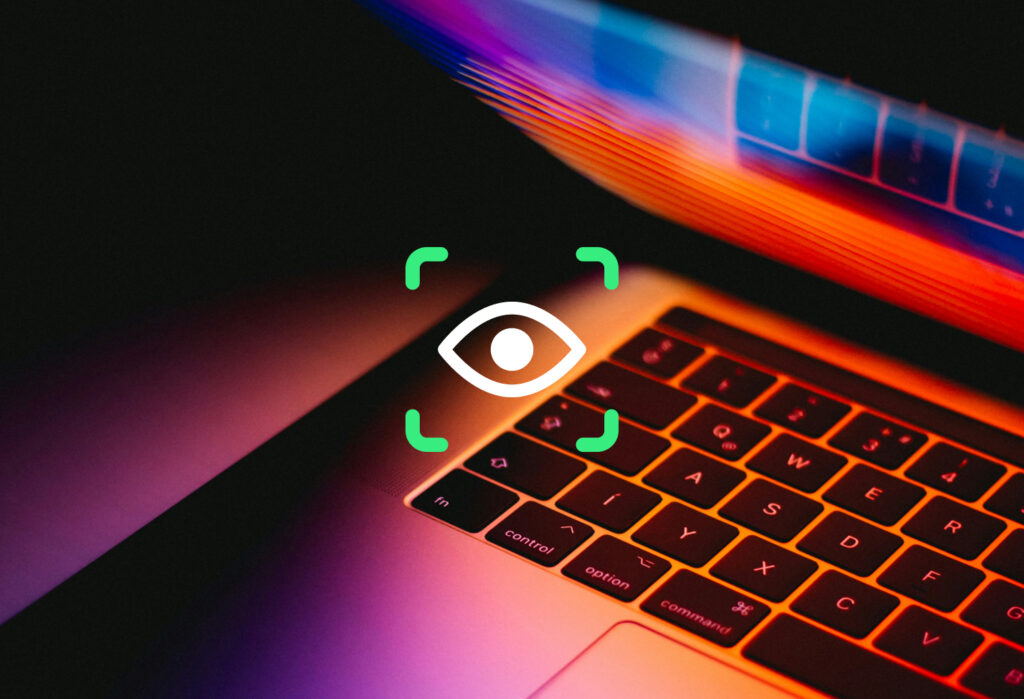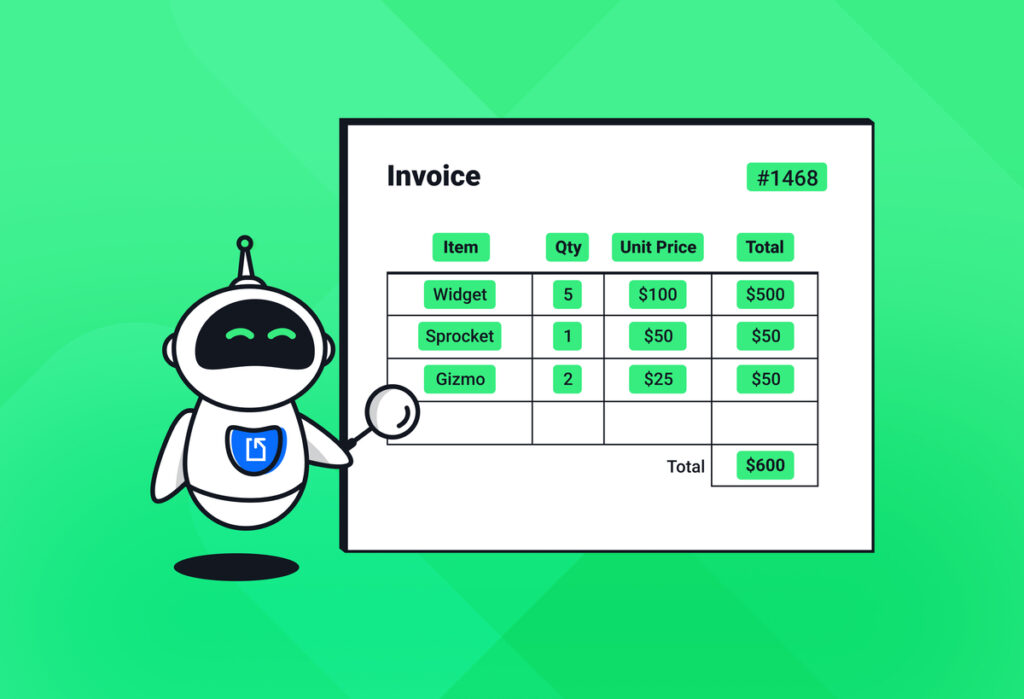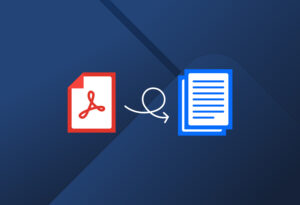Companies and organizations worldwide rely on OCR to extract data locked in scanned documents, images, and handwritten notes. However, this technology is not without its limitations. Sometimes, OCR struggles with low-quality images, unconventional fonts, or complex layouts. Thankfully, the emergence of deep learning during the 2010s has paved the way for the next big leap in document processing: artificial intelligence. Today, it is possible to combine both OCR and AI to achieve better results. Enter AI OCR, the new solution for converting physical documents into machine-readable data.
In this guide, we’re going to explore what AI OCR is, how it works, the advantages of using it, and how you can start implementing it with DocparserAI.
Capture Key Data from Your Documents Easily
Use Docparser to automate data entry, save time, and streamline your document-based workflows.
No credit card required.
What Is AI OCR?
The term AI OCR stands for Artificial Intelligence (AI) Optical Character Recognition (OCR). It is an advanced form of OCR technology that uses AI to overcome the limitations of traditional OCR, namely:
- Inaccuracies that are caused by low-resolution, blurry, or noisy images.
- Failing to recognize unusual text fonts, handwriting, and varying text sizes.
- Lack of support for multiple languages and non-standard characters.
- Difficulties with complex document layouts.
- Lack of contextual understanding.
To be clear, standard OCR is still highly effective and widely used around the world. But to address these challenging scenarios, it has evolved by incorporating AI (more specifically, machine learning and deep learning techniques). AI-powered OCR leverages AI to overcome those limitations and improve its ability to recognize information accurately.

Is OCR considered AI?
No, traditional OCR is not considered AI. OCR relies on predefined algorithms that recognize letters and numbers by comparing them with patterns in an internal database. This way, OCR converts scanned physical documents to digital data. That process does not involve the use of AI.
AI-powered OCR, on the other hand, does use artificial intelligence to recognize information more effectively. Let’s see how that works.
Capture Key Data from Your Documents Easily
Use Docparser to automate data entry, save time, and streamline your document-based workflows.
No credit card required.
How Does It Work?
To extract data from an image or scanned document, an AI OCR software goes through five steps:
- Image pre-processing: the software begins by enhancing the quality of the document to facilitate text recognition. This involves reducing noise, correcting tilted or distorted text, converting the image to grayscale, etc.
- Text detection and segmentation: next, the software segments data into separate areas like paragraphs, lines, tables, words, etc.
- Text recognition: the AI OCR solution uses ML algorithms to recognize and extract text (as well as tables). It can recognize variations in font, size, and even handwriting thanks to ICR (Intelligent Character Recognition).
- Post-processing and contextualization: the software may use NLP (Natural Language Processing) to understand the context of the extracted text and correct misspelled words, interpret abbreviations, and more.
- Data output and integration: lastly, the extracted data is made available in a machine-readable format and can be integrated into a database or system. The information that was trapped in physical documents is now searchable, editable, and ready to be analyzed or used in business workflows.
As we can see, AI OCR makes use of various forms of AI to not only identify data but understand it, allowing for more accurate data extraction.
Speaking of accuracy, it’s time for us to delve into the key advantages of using AI OCR.
What Are The Advantages of AI-Powered OCR?
Enhanced data accuracy
While OCR tools can extract data with impressive accuracy, the addition of OCR AI capabilities gives them a significant boost in performance. Professionals who handle complex or low-quality documents will be thrilled to discover the enhanced character recognition abilities of AI-powered tools which allow them to correctly identify text from a wide range of fonts, languages, and layouts.
Better handwriting recognition
OCR tools are designed mainly to recognize digital text on printed documents and often struggle with handwritten text. But now, thanks to Intelligent Character Recognition, your AI-enhanced OCR solution can recognize handwriting and extract it successfully. This makes OCR a lot more versatile and reliable in scenarios requiring handwriting recognition, such as paper forms, medical records, or historical documents.

Faster document processing
Standard OCR already achieves amazing time and cost savings compared to manual data entry. The introduction of AI takes it to the next level to make document processing even faster. As a result, workflows take less time to complete, the cost of processing documents goes down, and employees have more time for higher-value tasks.
Language and contextual understanding
Unlike traditional OCR, AI OCR can recognize text by interpreting its context. By using NLP, it analyzes neighboring text and guesses the word it tries to extract. Here are some examples:
- Distinguishing between similar-looking characters (such as “0” and “O” or “1” and “I”).
- Correcting a misspelling (“invoice” instead of “invoce”)
- Spelling out an abbreviation (e.g. changing “Amt” to “Amount”) to uniformize text).
- Understanding the difference between a numerical value that represents a price versus a date.
Continuous learning
Artificial intelligence makes it possible for OCR systems to improve as they incorporate new data, user corrections, and feedback loops. This continuous learning capability allows the system to dynamically adapt to new fonts, document layouts, and variations in language. So not only does it maintain great performance but it also becomes more effective at handling new challenges.
Scalability
AI OCR scales easier with growing document processing needs. It’s easy to scale up for large volumes of paper documents or operational peaks without sacrificing processing speed or data accuracy. This ability to handle large-scale data extraction tasks makes it indispensable for large enterprises.
So, by overcoming the limitations of traditional OCR and offering those benefits, AI OCR has become a game-changer for businesses across industries. But what does that look like exactly?
How Is AI OCR Used Today?
AI OCR already has a lot of applications in multiple industries. As this technology keeps evolving, its range of use cases will keep expanding too. To give you a clear idea of how companies and organizations use AI OCR, here are three use cases.
Identity verification and document authentication
As technology keeps evolving, scammers develop new ways to commit fraud and theft. In fact, falsified IDs, passports, and other documents are becoming more common. To combat this, identity verification must evolve as well by incorporating artificial intelligence. This is particularly helpful in industries like banking and travel, which are big targets for fraudsters.
AI-based document verification makes the process of verifying the identity of customers faster, more accurate, and more secure. An AI OCR system can verify passports, driver’s licenses, employee badges, and other documents with unmatched precision. In addition to extracting information like names and dates of birth, it can also check for signs of forgery or alteration. The system then cross-checks data against other documents and sources, checks the document for compliance with regulations, and may even use facial recognition to confirm identity.
Document processing in the logistics industry
Operational efficiency is key to success in the logistics industry. While OCR has played a great role in automating repetitive tasks, the rise of AI opens the door for higher accuracy and more applications that further streamline workflows:
- Automated document processing for shipping and receiving: AI OCR can extract data from bills of lading, delivery receipts, and other documents — even if the scan or image quality isn’t great.
- Inventory management and barcode reading: many companies use AI OCR to read barcodes and QR codes. By quickly logging incoming and outgoing items, they maintain real-time stock levels and minimize discrepancies.
- Customs documentation and compliance: AI-driven OCR helps expedite the customs declaration process by extracting data from customs forms, export-import papers, and similar documents without errors. This helps prevent processing delays and hold-ups.

Healthcare record management
Healthcare professionals use OCR tools to digitize patient records, prescriptions, lab reports, and other paper documents. However, they often have to face limitations such as a lack of handwriting recognition or difficulties processing complex layouts.
As we mentioned earlier, AI can recognize handwritten notes and digitize them accurately. But that’s not all: it can understand the context of the extracted data to distinguish between similar medical terms, recognize abbreviations, and more. Additionally, AI-powered OCR can adapt to new layouts and formats over time.
So using AI to process paper documents significantly reduces the administrative workload, improves the patient experience, and minimizes the chances of medical errors.
Document archiving and digitization
Digitizing historical documents is paramount to their preservation; however, that process is often extremely time-consuming and error-prone. But that’s not all: sometimes documents are in poor condition or have fonts that are difficult for OCR to recognize.

Thankfully, AI-powered OCR systems have proven to be a boon. They can digitize handwritten or printed text, making it accessible and searchable. Even errors can be identified and corrected thanks to contextual understanding. Furthermore, translating a document into another language is now possible.
These capabilities make AI OCR a highly valuable tool for researchers, archivists, and cultural institutions that need to archive and preserve historical documents.
Get Started With AI OCR
By incorporating AI capabilities, OCR has become faster, more accurate, and more versatile. In addition to extracting handwritten and printed data, it can understand context, rectify small errors, and improve its performance over time with more data. AI OCR already has a lot of practical applications across various industries, and as more organizations adopt it, they will unlock its vast potential and discover new ways to enhance operational efficiency.
At Docparser, we have been helping thousands of users process physical documents with our OCR engine for many years. Users praise our document parser for being user-friendly, flexible, and secure. Now, with the recent launch of DocparserAI, we have combined OCR with AI to improve the processing of scanned documents.
DocparserAI automatically creates parsing rules from one document only, making the setup process fast and frictionless — while still allowing you to customize outputs to perfection. You can use it to extract data from scanned documents, parse resumes, extract handwritten notes, checkbox data, and more. So sign up for a free trial account and build your AI OCR online solution.
Capture Key Data from Your Documents Easily
Use Docparser to automate data entry, save time, and streamline your document-based workflows.
No credit card required.



